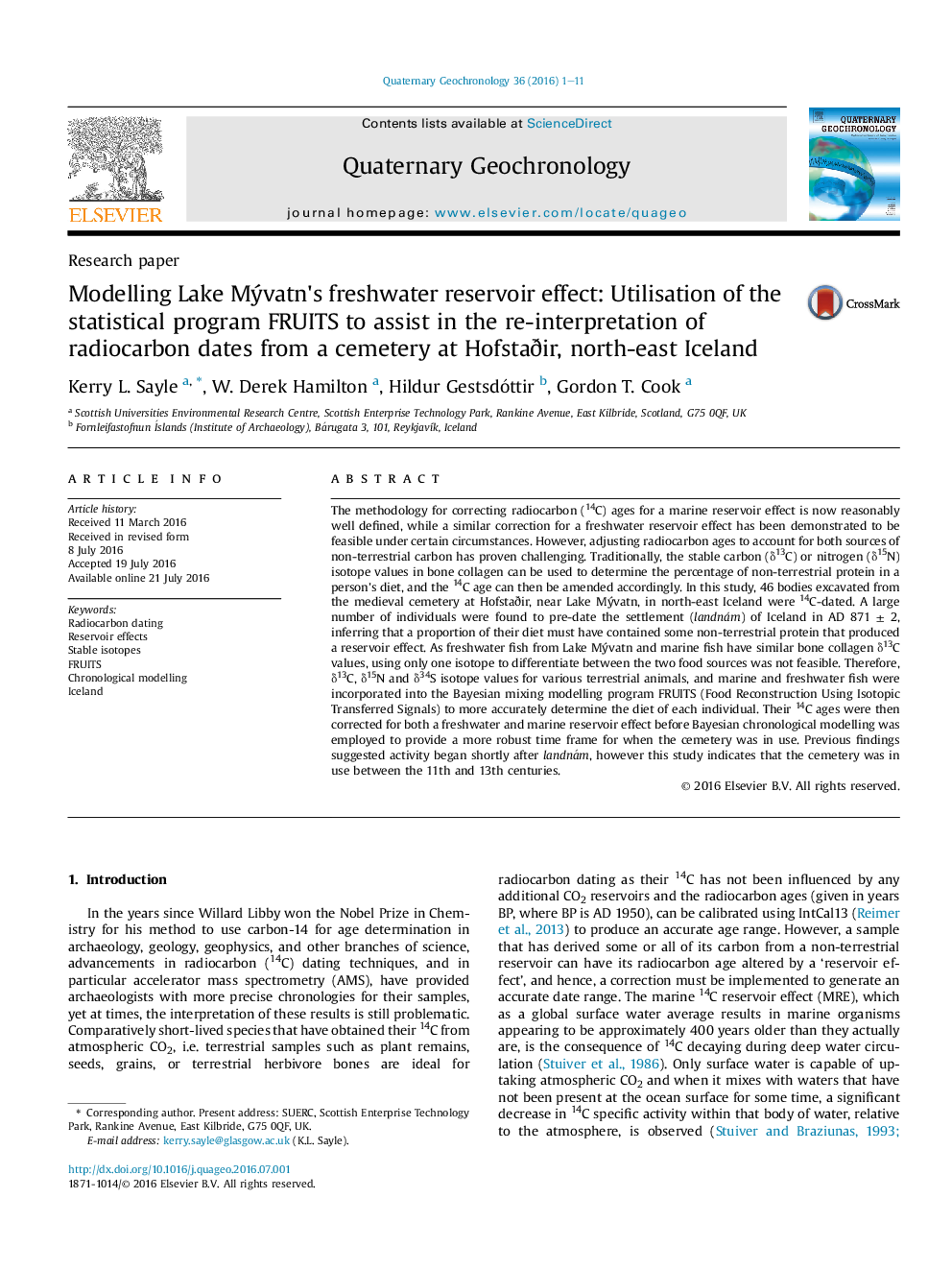| کد مقاله | کد نشریه | سال انتشار | مقاله انگلیسی | نسخه تمام متن |
|---|---|---|---|---|
| 6442484 | 1639840 | 2016 | 11 صفحه PDF | دانلود رایگان |
عنوان انگلیسی مقاله ISI
Modelling Lake Mývatn's freshwater reservoir effect: Utilisation of the statistical program FRUITS to assist in the re-interpretation of radiocarbon dates from a cemetery at Hofstaðir, north-east Iceland
دانلود مقاله + سفارش ترجمه
دانلود مقاله ISI انگلیسی
رایگان برای ایرانیان
کلمات کلیدی
موضوعات مرتبط
مهندسی و علوم پایه
علوم زمین و سیارات
ژئوشیمی و پترولوژی
پیش نمایش صفحه اول مقاله

چکیده انگلیسی
The methodology for correcting radiocarbon (14C) ages for a marine reservoir effect is now reasonably well defined, while a similar correction for a freshwater reservoir effect has been demonstrated to be feasible under certain circumstances. However, adjusting radiocarbon ages to account for both sources of non-terrestrial carbon has proven challenging. Traditionally, the stable carbon (δ13C) or nitrogen (δ15N) isotope values in bone collagen can be used to determine the percentage of non-terrestrial protein in a person's diet, and the 14C age can then be amended accordingly. In this study, 46 bodies excavated from the medieval cemetery at Hofstaðir, near Lake Mývatn, in north-east Iceland were 14C-dated. A large number of individuals were found to pre-date the settlement (landnám) of Iceland in AD 871 ± 2, inferring that a proportion of their diet must have contained some non-terrestrial protein that produced a reservoir effect. As freshwater fish from Lake Mývatn and marine fish have similar bone collagen δ13C values, using only one isotope to differentiate between the two food sources was not feasible. Therefore, δ13C, δ15N and δ34S isotope values for various terrestrial animals, and marine and freshwater fish were incorporated into the Bayesian mixing modelling program FRUITS (Food Reconstruction Using Isotopic Transferred Signals) to more accurately determine the diet of each individual. Their 14C ages were then corrected for both a freshwater and marine reservoir effect before Bayesian chronological modelling was employed to provide a more robust time frame for when the cemetery was in use. Previous findings suggested activity began shortly after landnám, however this study indicates that the cemetery was in use between the 11th and 13th centuries.
ناشر
Database: Elsevier - ScienceDirect (ساینس دایرکت)
Journal: Quaternary Geochronology - Volume 36, September 2016, Pages 1-11
Journal: Quaternary Geochronology - Volume 36, September 2016, Pages 1-11
نویسندگان
Kerry L. Sayle, W. Derek Hamilton, Hildur Gestsdóttir, Gordon T. Cook,